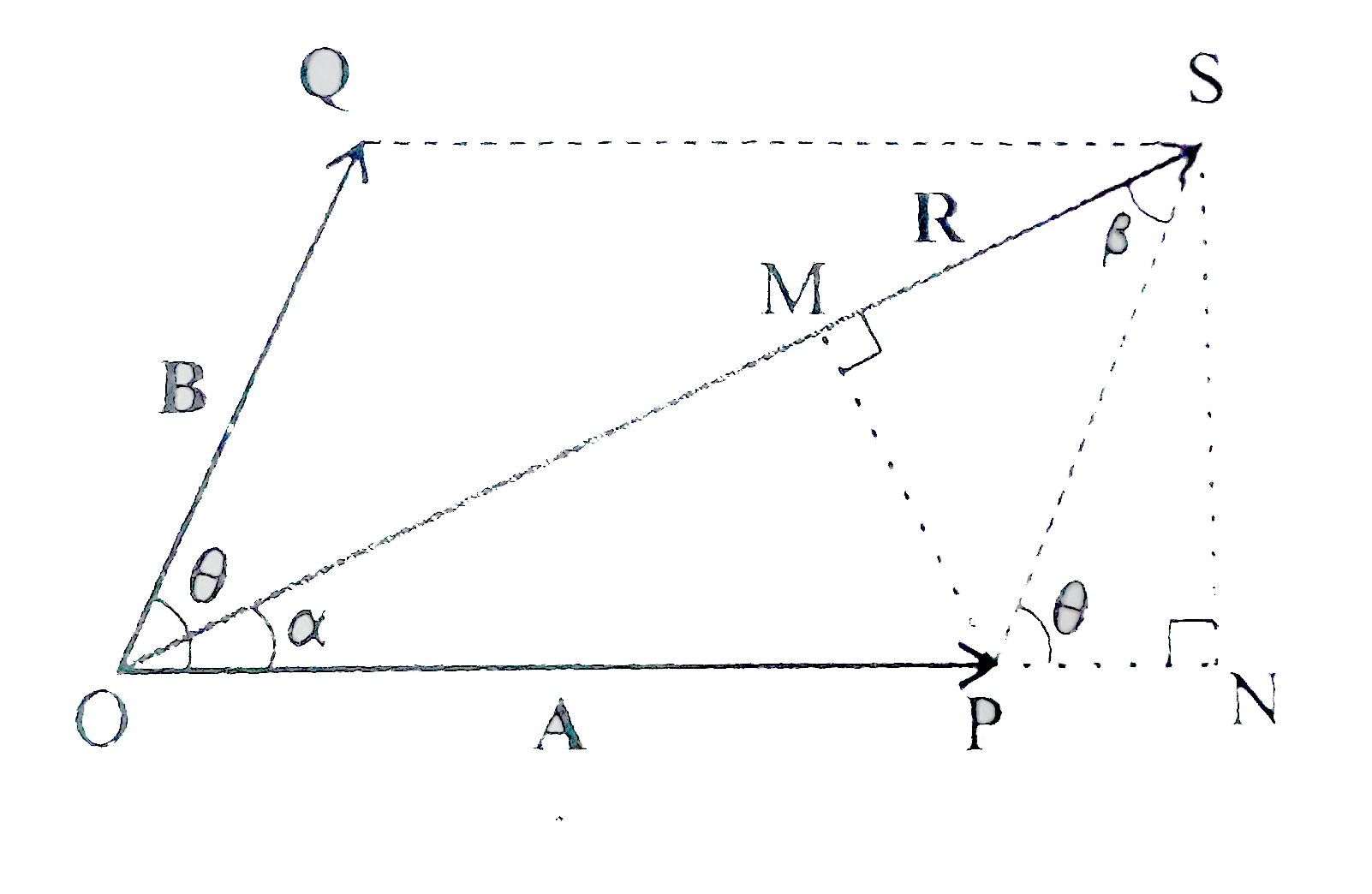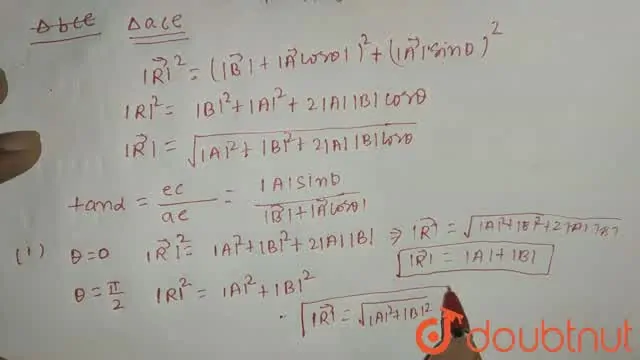State parallelogram law of vector addition. Find analytically the magnitude and direction of resultant vector. Apply it to find the resultant when,
(i) Two vectors are parallel to each other
(ii) Two vectors are perpendicular to each other
Parallelogram law of vector addition: If two vectors, acting simultaneously at a point, can be represented both in magnitude and direction by two adjacent sides of a parallelogram, the resultant is represented completely, both in magnitude and direction, by the diagonal of the parallelogram passing through that point. Let OP and OQ represent the two vectors →A and →B and making an angle θ Then, using the parallelogram method of vector addition, OS represents the resultant vector →A and →rB making an angle θ then using the parallelogram method of vector addition os represent →R=→A+→B
SN is normal to op and PM is normal to os from the geometry of hte figure
OS2=ON2+SN2
but ON=OP+PN=A+Bcosθ
in △ OSN , SN =OS sinα=Rsinα and
In △ PSN ,SN =PS sinθ=Bsinθ
where R isd given by equation (i) or tan α=SNOP+PN=BsinθA+Bcosθ
(i) given θ=0∘
∴R=√A2+B2+2ABcos(0∘)=A+B,tanα=Bsinθ∘A+Bcos0θ=0orα=0∘
(ii) Given : θ=π2∴R=√A2+B2+2ABcos(π)2=−√A2+B2
α=tan−1(B)A

Similar Questions
State triangle law of vectors addition. Find analytically the magnitude and dirction of resultant vector.
View SolutionState parallelogram law of vectors addition .Find analytcallly the magnitude and direction of resultant vector, When (i) two vectors are parallel to each other (ii) two vectors are perpendicular to each other.
View SolutionTwo vectors →P and →Q that are perpendicular to each other are :
View SolutionMagnitude of addition of two vectors
View SolutionIn parallelogram law of vector, the direction of resultant vector is given by
View SolutionTwo vectors →a&→b have equal magnitudes of 10 m ,. Find the magnitude and direction of the resultant vector .
View SolutionFind the magnitude and direction of the resultant of two vectors A and B in the terms of their magnitudes and angle θ between them.
 View Solution
View SolutionThe sum and difference of two vectors are perpendicular to each other. Prove that the vectors are equal in magnitude.
View SolutionFor the vectors →Aand→B in the above example , find unit vector parallel to the resultant of the two vectors
View SolutionIn Q-2, if vectors are perpendicular to each other then find the value of λ.
View Solution


